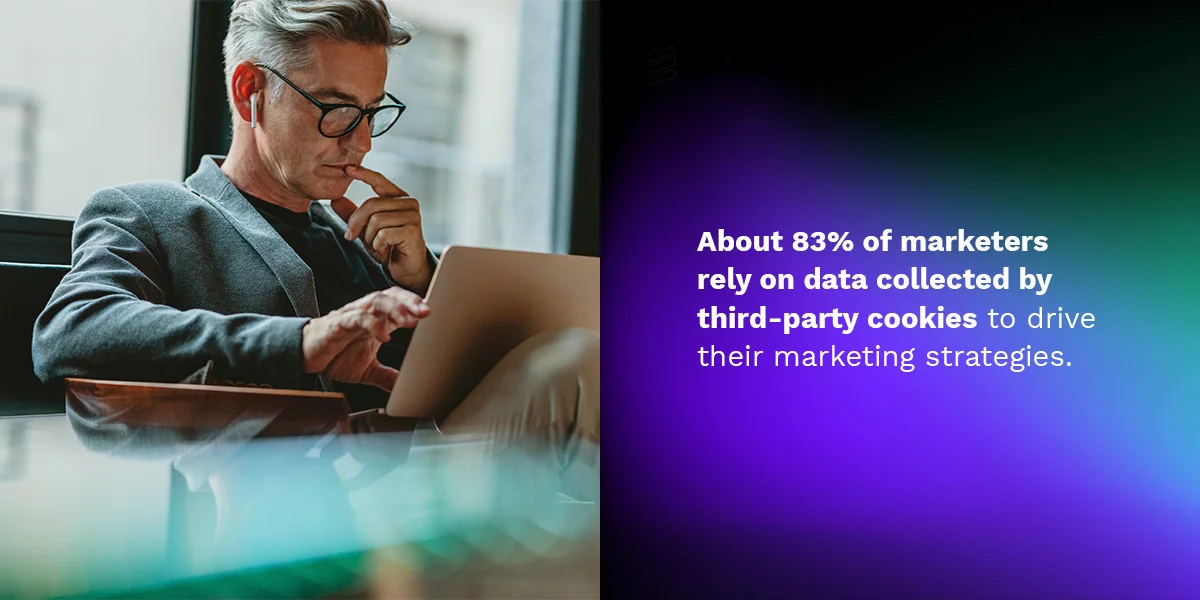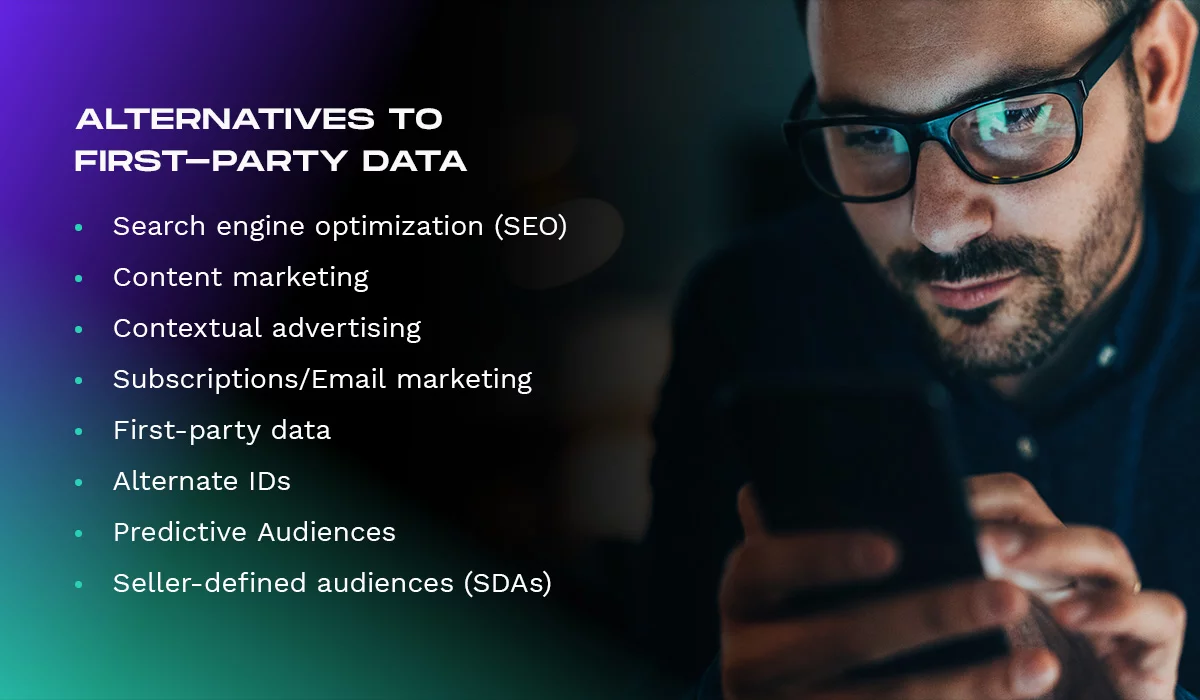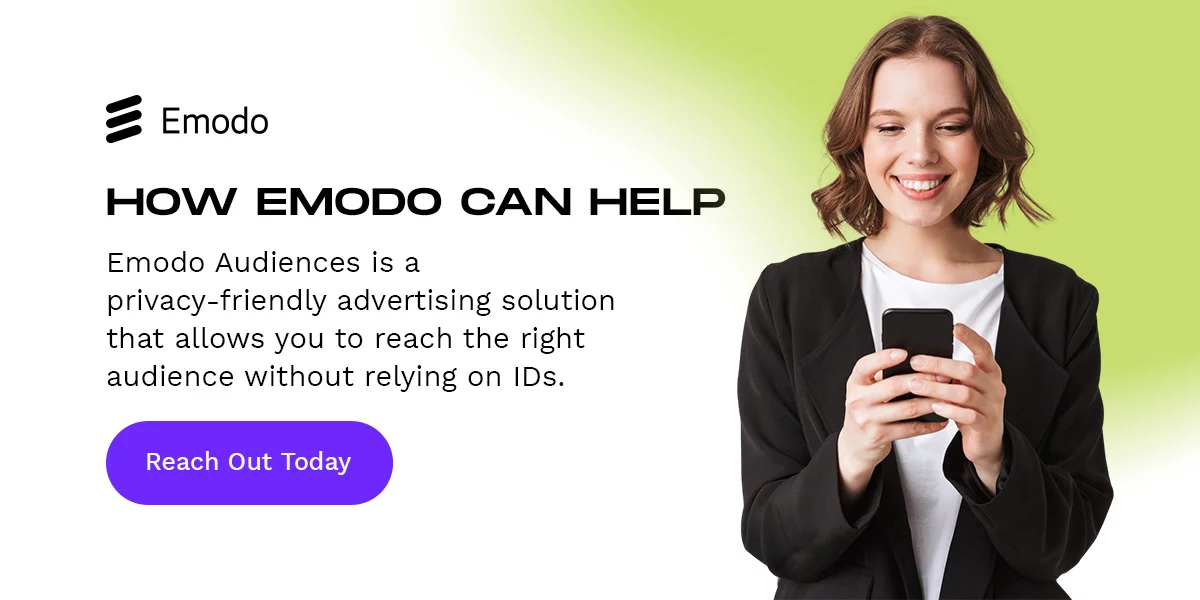In the summer of 2022, Google announced it would push back the date of its third-party cookie phaseout from late 2023 to 2024. Digital marketers have relied on these little packets of code for years to serve users with more personalized ads and smooth user experiences.
That’s why the death of cookies is likely to change digital marketing as we know it. Without third-party cookies, marketers will lose valuable data about their target audiences, including demographic information and browsing habits. Those who are unprepared are likely to experience serious losses in revenue.
So how can marketers survive this cookie-less future? Investing in the development of alternative technologies and advertising channels may be the most promising solution.
What are cookies?
Cookies are text files that gather data about you and your browsing activity. They identify your computer while you’re connected to a computer network. More specifically, HTTP cookies can be used to identify and track specific users.
There are two types of HTTP cookies in use today:
- Session cookies: These cookies are only active while you’re on a website. They’re stored in your device’s random access memory (RAM) and are deleted at the end of your session.
- Persistent cookies: These cookies embed into your device’s hard drive and remain for an indefinite amount of time. Some have an expiration date when they are automatically deleted.
Digital marketers use both to track user behavior and understand their target audience. There’s also a difference between first-party and third-party cookies, which depends on who owns the cookie.
What are first-party cookies?
When you visit a website, you might be prompted to accept cookies. These are first-party cookies, and they collect information about your activity on that particular site to improve the user experience.
For example, many websites use persistent first-party cookies to remember user login information and custom page configurations. This capability enables publishers to provide a smooth, streamlined user experience. It also allows them to monitor valuable analytics like session length, bounce rate and time spent per page.
The main difference between first and third-party cookies is where they collect information. First-party cookies are website-specific. Once you click off the site, first-party cookies stop tracking you.
What are third-party cookies?
Third-party cookies, on the other hand, follow you across the internet to collect information about your overall browsing habits. They work by embedding a persistent file on your computer to gather data as you surf the web.
Unlike first-party cookies, third-party cookies are generated by companies other than the owners of the site you’re browsing — typically, digital advertising agencies. When you visit a site, the cookies track your site activity and send it to the third party who created the cookie.
The file collects and saves data about your browsing session, such as the sites you visit and how much time you spend on certain pages. Then, it sends this data back to the third party who created the cookie so they can use it to build out individual and group audience profiles.
How do third-party cookies benefit brands?

Third-party cookies allow brands to gather a treasure trove of data about their audiences. That’s why digital advertising agencies are so reliant on third-party cookies. About 83% of marketers rely on data collected by third-party cookies to drive their marketing strategies.
You’re probably familiar with these cookie-based marketing techniques:
- Retargeting: Tracking users and serving them ads for products or pages they viewed earlier.
- Ad targeting: Serving users specific ads based on their unique browsing histories and individual profiles.
This data helps you understand your audience on a deeper level so you can determine how best to market to them. The more data you have, the more accurately you can cater to your audience.
When and why are third-party cookies going away?
Google Chrome will join Firefox and Safari in eliminating third-party cookies by late 2024. The company originally intended to phase cookies out by early 2022, then pushed the date back to late 2023. Google then extended the deadline a second time to give themselves and other advertising companies more time to test the new provisions and plan out alternatives.
This change is a big deal, especially since Chrome handles the vast majority of web traffic. In 2022, Chrome made up 65.86% of the global browser market share.
According to Google, the company will not develop a new ID to replace third-party cookies after abandoning their Federated Learning of Cohorts (FLoC) algorithm.
Now, Google plans to stop using all IDs in their products and services. Instead, they will use privacy-preserving application programming interfaces (APIs) to deliver results for advertisers and publishers.
Google has chosen to take a phased approach to third-party cookie blocking to give brands and marketers time to plan their next steps.
Why is Google getting rid of third-party cookies?
Privacy is the main push behind the cookie’s demise — in a survey of 2,000 U.S. adults, 86% said data privacy is a growing concern for them. According to that same survey, 70% of surveyed companies reported increasing data collection efforts since 2020.
This concern is completely valid. Until 2018, users had no control over when companies tracked them with cookies. That year, legislators passed two key regulations on third-party tracking:
- GDPR: The General Data Protection Regulation (GDPR) mandates that websites must ask for consent before using cookies on users in the European Union and the European Economic Area (EEA).
- CPRA: The California Privacy Rights Act (CPRA) is similar to the GDPR, but it is specific to California residents.
Although these laws put restrictions on how companies could use cookies, they have improved the quality of data cookies can collect. Allowing users to choose which types of cookies they allow can help you collect more specific information and create ads that better serve your audience.
How will the death of third-party cookies impact the advertising industry?

With Google cookies going away, you might be wondering how this change will affect digital advertising. We’ll be honest — it’ll be a dramatic change.
Many marketers rely on third-party data to inform ad campaigns. According to a recent survey, 41% of marketers believe the loss of third-party cookies will be their biggest challenge in the coming years. And 44% expect to increase spending by up to 25% to get the same results they achieved in 2021.
If you only want to track user behavior on the site you own, this change will only have a small impact on your activity. But if you’re an online marketer who relies on user data for a more complete understanding of your audiences, you should be closely following the news as it unfolds.
Browsers will track consumers in new ways
While the death of the cookie will dramatically change the digital marketing landscape for good, new technologies will arise to take its place. Ad tech companies are already hard at work creating alternative technologies to replace third-party cookies or improve first-party cookies.
More specifically, Google has announced the development of new technologies that will replace third-party cookies while remaining compliant with regulations like GDPR.
The Privacy Sandbox
Google aims to block invasive tracking technologies like third-party cookies and replace them with more transparent programs. One such program is the Privacy Sandbox, which is currently in development.
With the Privacy Sandbox, all individual user data remains in the Chrome browser. This is a completely different move from how third-party cookies currently operate, where the cookie embeds in the user’s device.
The Sandbox initiative is an umbrella containing various technologies advertisers can use to personalize ads without dealing with the privacy problems of cookies. It also blocks covert tracking techniques such as device fingerprinting.
Google Topics
The Topics API is Google’s replacement for the failed FLoC algorithm, which aimed to anonymize user data by building cohort profiles rather than individual user profiles.
However, a study by MIT computer scientists discovered FLoC did not deliver on its promises. The code lacked sufficient protections for personally identifiable information (PII), which researchers feared could lead to discrimination and predatory targeting.
So Google scrapped FLoC and started over with Topics. Like FLoC, Topics gathers data about groups of users rather than individuals. However, Topics groups users into far fewer categories (350 as opposed to FLoC’s more than 30,000), which may anonymize data more effectively.
First-party data
Google has stated that first-party data will become more important as part of the Privacy Sandbox initiative. Embracing first-party cookies can help marketers and publishers find new ways to both improve the user experience and build a better targeted marketing strategy.
Alternatives to third-party cookies

Google’s new privacy-focused technologies are one alternative you can use, but they are likely to remain in development for most of 2023.
Some companies have begun developing their own tracking tools to replace cookies. However, the legality of these new tools may change as privacy concerns continue to grow.
Others are returning to tried-and-true strategies like content marketing and contextual advertising. Some examples of alternatives to cookies include:
- Search engine optimization (SEO): The overall ROI of organic SEO is much higher than that of paid advertising. Understanding user intent and identifying popular search terms can help you develop a much deeper understanding of your target audience so you can deliver more personalized ads.
- Content marketing: Publishing relevant content throughout the conversion funnel can help you attract and win over the right audience. You can also use your premium content to collect leads. For example, you could offer access to a free webinar or white paper in exchange for an email address or a phone number.
- Contextual advertising: An alternative to behavioral marketing, contextual advertising involves inserting relevant ads into a piece of content. For example, placing a dog food ad in the middle of a video about dog care tips.
- Subscriptions/Email marketing: Twenty-three percent of marketers plan to invest more in email marketing software to get around Google’s new policy.
- Zero-party data: Information that users voluntarily give to a brand, such as purchase intent, preference center data and personal context.
- First-party data: Since first-party cookies are here to stay, it makes sense to get the most out of them as you can. Use these to build trust with your audience.
- Alternate IDs: Third-party alternate IDs like Unified ID 2.0 (UID 2.0) enable you to efficiently target specific audiences without infringing on anyone’s privacy. Essentially, they function like third-party cookies without the security concerns.
- Predictive Audiences: A new feature of Google Analytics 4, Predictive Audiences allows you to leverage predictive metrics via AI to understand buyer behavior. For example, you can use Predictive Audiences to target those most likely to purchase a specific product without relying on IDs.
- Seller-defined audiences (SDAs): SDAs allow publishers to create and sell targetable audiences without IDs. Although they’re still fairly new to the scene, Google’s timeline update may give publishers enough time to perfect them.
Experimenting with these or other alternatives can help you become more digitally resilient, which is key to thriving in the ever-evolving digital marketplace. Building trust with your audience by being transparent about the information you collect should be a priority moving forward.
How and why marketers should prepare now
When should you start getting ready for the death of cookies? As soon as possible. According to an Epsilon survey, fewer than half of the respondents reported feeling “very prepared” for the phaseout. Diversifying your advertising portfolio now allows you to gain an edge over your competition.
What marketers can do
If you use third-party data in your marketing campaigns, the most important thing to do is to keep up with industry news and the evolving discussion around alternatives to cookies.
Rather than look for workarounds to third-party cookies, it can help to reexamine your current digital marketing strategy. Look for areas where you can tighten your strategy without relying on data from third-party cookies.
Some suggestions include:
- Prioritize first-party data: First-party data will be a key part in the Privacy Sandbox initiative. Some companies are looking into creating new tools that leverage first-party cookies more effectively.
- Reevaluate your budget: Look into which advertising channels are driving the most value for your company. What you find might surprise you — many companies lose money on paid Internet ads due to fraudulent or accidental clicks.
- Leverage new technologies: Advancements in artificial intelligence (AI) and AI-powered marketing technologies are making it possible to personalize advertising at scale without having to rely on cookies or other IDs. Investing in a new solution like Emodo Audiences could help you lock in the right audience and future-proof your strategy.
It’s best to start looking into and testing new technologies as soon as possible for the greatest chance at success. Once Google finally blocks cookies for good, it may be too late.
How Emodo can help
It’s a massive understatement to say that the death of the cookie will change digital marketing as we know it. That’s why we developed Emodo Audiences.
Emodo Audiences is a privacy-friendly advertising solution that offers a portfolio of audience targeting, including Emodo Predictive Audiences and Emodo Verified Audiences, to allow you to reach the right audience at scale without reliance on IDs.
Emodo also offers dynamic creative experiences, such as Emodo Adapt, that leverage campaign KPI signals to create highly personalized campaigns at scale, in order create a more strategic approach to advertising.
Want to learn more about how Emodo can future-proof your targeting efforts? Reach out today for more information.
MORE LIKE THIS



